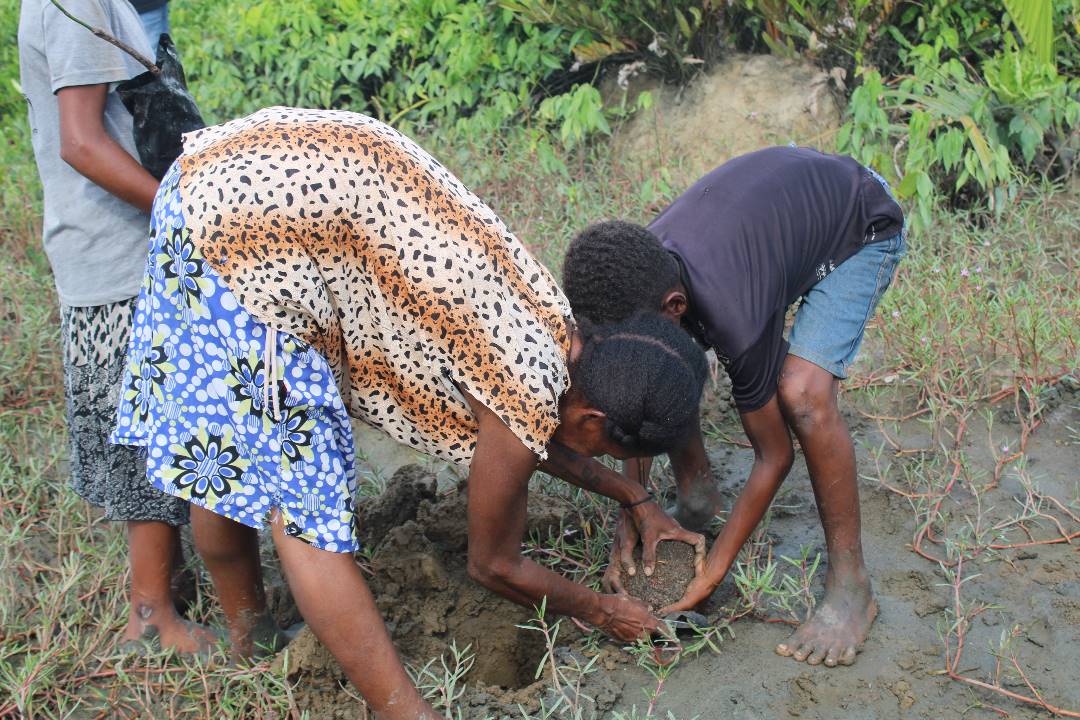Mangrove Planting Activity- Karama Village.
28 October 2022

The USP component of the European Union-funded Intra-ACP GCCA+ Pacific Adaptation to Climate Change and Resilience Building (PACRES) programme recently made a field visit to Karama village in Central Kerma, Gulf Province, on 27 October 2022, to assist in mangrove planting as an Ecosystem-based Adaptation (EbA) to Climate Change and Natural Hazards. Many coastal communities in Papua New Guinea depend on mangroves for their livelihood and the activity provided an opportunity to raise awareness on the importance of protecting mangroves as a key livelihood ecosystem but also in protecting coastal communities from the impacts of climate change and natural hazards such as sea level rise and storm surges associated with tropical cyclones.
According to the community, the last climate change and mangrove reforestation awareness in Karama village took place in 2012. The community therefore welcomed the USP PACRES team for the timely visit and raising awareness on importance the mangrove ecosystems to climate change impacts as well overall livelihood of the people. During the visit, over one hundred mangrove seedlings of Rhizophora stylosa and R.apiculata were purchased and transported to Karama from the Tahira Nursery in the Central Province.
Based on outcomes from previous climate change actions, and in collaboration with PACRES partners (SPREP and SPC), the European Union PACRES USP Project continues to strengthen the resilience of five P-ACP countries: Papua New Guinea, Samoa, Solomon Islands, Timor-Leste and Vanuatu, against climate change impacts.
The USP component of the EU-funded Intra-ACP GCCA+ PACRES programme is implemented in partnership with the Secretariat of the Pacific Regional Environment Programme (SPREP), the Pacific Community (SPC), and the Pacific Islands Forum Secretariat (PIFS), while the SUPA Project is being implemented with SPREP and SPC.